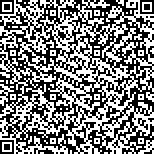本文已被:浏览 3897次 下载 0次
中文摘要: 目的 分析幼儿园在园6岁儿童视力筛查结果及相关影响因素,为做好中山市综合防控儿童青少年近视工作提供参考 依据。方法 2019年4—10月随机抽取中山市全市24个镇区243间幼儿园在园6岁儿童20327名,采用美国伟伦双目验光仪检 查并分析筛查结果;对受检儿童家长进行问卷调查,了解儿童用眼卫生习惯,分析影响因素。结果 异常检出率为11.8%,异 常以散光(77.5%)为主,其次为近视(6.8%);城、镇儿童视力异常检出没有统计学差异(χ2=0.000,P>0.05),男、女童视力异 常检出也没有统计学差异(χ2=1.985,P>0.05);电子屏幕时长、挑食习惯是儿童视力异常的影响因素(χ2=8.962;χ2=6.398, P<0.05),参加课余兴趣班的儿童更易发生视力异常(OR=1.379,CI:1.124~1.692)。结论 守护儿童眼健康需依托医疗机 构、家庭配合,在保证儿童均衡饮食的前提下,做好健康用眼指导,避免用眼时间叠加。
Abstract:OBJECTIVE To analyze the vision screening results of 6-year-old children in kindergartens and the related influencing factors, and to provide a reference for the comprehensive prevention and control of myopia in children and adolescents in Zhongshan. METHODS From April to October 2019, 20,327 6-year-old children in 243 kindergartens in 24 towns and districts of Zhongshan City were randomly selected, and the screening results were analyzed using the US Weilun binocular optometry; questionnaire survey was conducted on the parents of the children To understand children's eye hygiene habits and analyze influencing factors. RESULTS The abnormal detection rate was 11.8%. The abnormality was mainly astigmatism (77.5%), followed by myopia (6.8%). There was no statistical difference in the detection of visual abnormalities in urban and town children (2=0.000,P> 0.05). (12.1%) was higher than girls (7.3%) (2=132.296,P <0.05); the length of electronic screens and picky eating habits were the influencing factors of children's vision abnormalities (2=8.962;2=6.398,P <0.05), and children participating in after-school interest classes were more likely to have vision abnormalities (OR=1.379,CI=1.124~1.692). CONCLUSION The protection of children's eye health requires the cooperation of medical institutions and homes. Under the premise of ensuring a balanced diet for children, it is necessary to provide guidance for healthy eye use and avoid superimposing eye time.
文章编号:3202002143 中图分类号:R729 文献标志码:
基金项目:
| Author Name | Affiliation |
引用文本:
